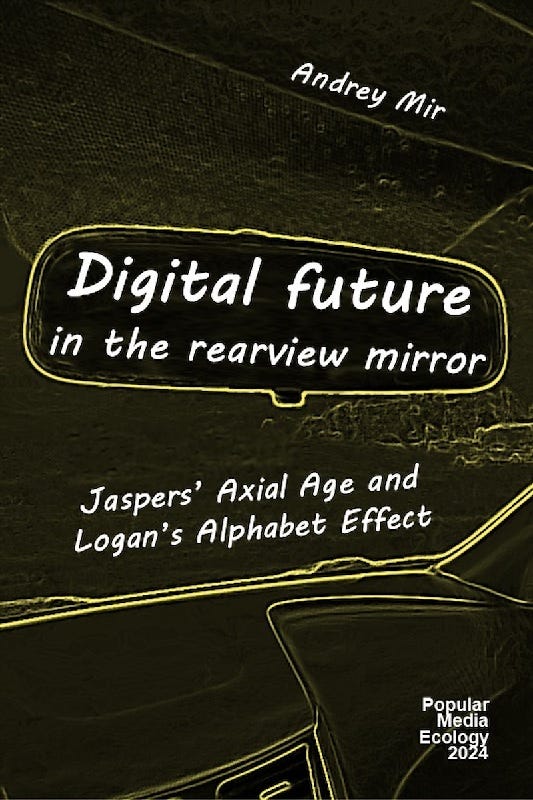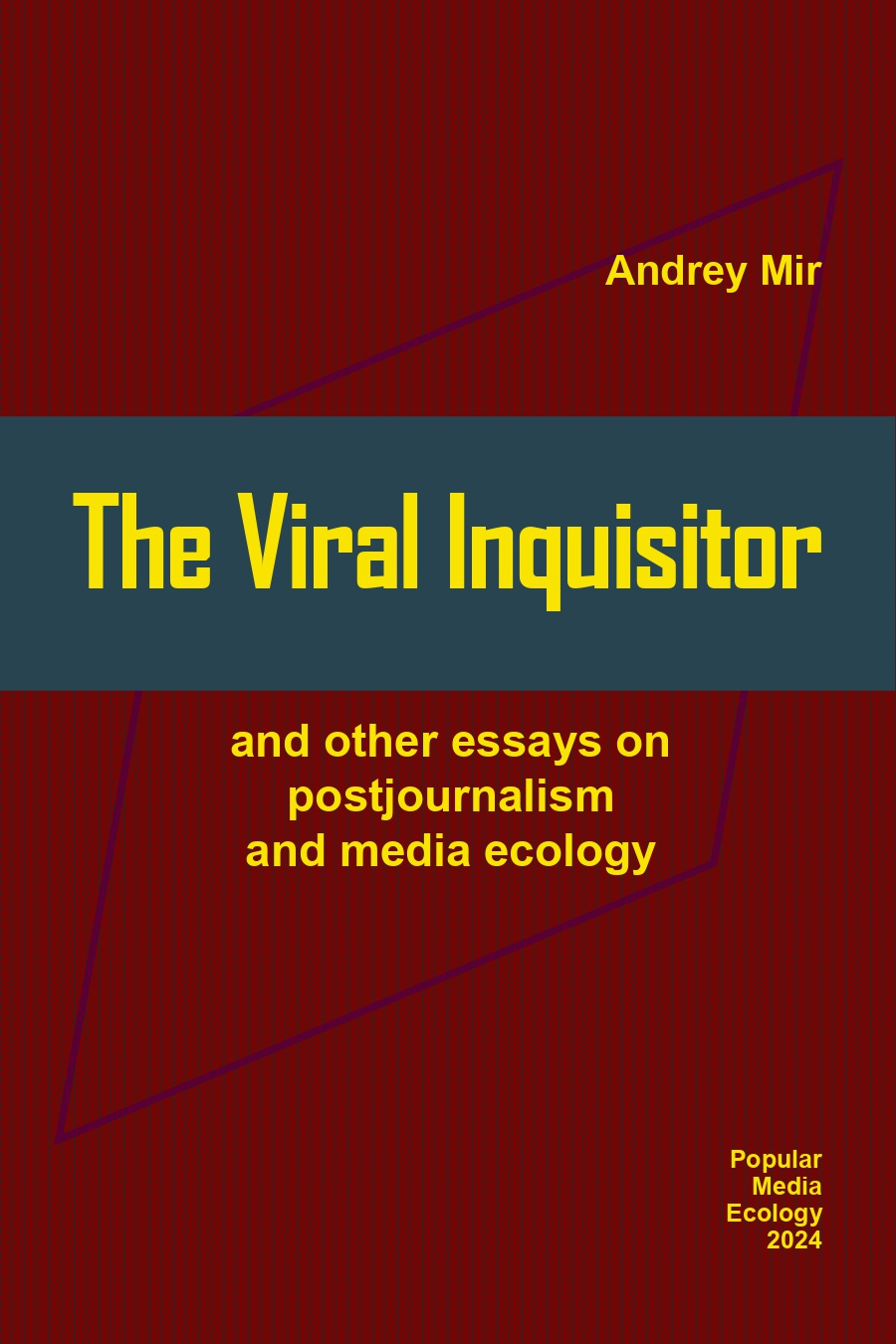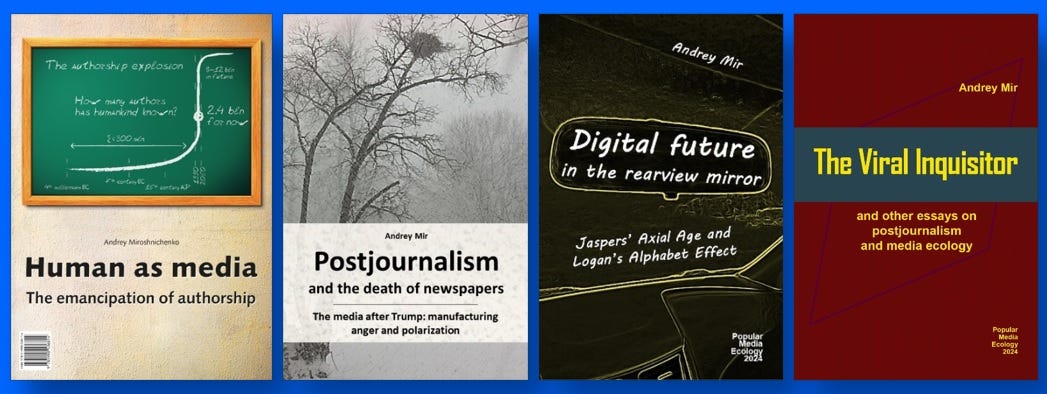The Revolt of the Public and Media Ecology
Marginal notes on Martin Gurri’s "The Revolt of the Public and the Crisis of Authority in the New Millennium" (2014)
When the Twitter revolutions struck in the East, some local elites saw them as Western conspiracies against “uncooperative” Eastern powers. But similar protests hit the West as well. Whether in the West or East, the common factor behind the protests seemed more tied to the condition of time than place. The wave of uprisings surged across the world in 2010–2011. Something significant happened then— and that something was the Internet, of course.
In his The Revolt of the Public and the Crisis of Authority in the New Millennium (2014; the second, 2018 edition is available on Amazon), Martin Gurri identifies common traits across the protests he examines, starting with Iran, Tunisia, and Egypt, and moving on to Spain, Israel, the USA, Turkey, Ukraine, Venezuela, and others. These traits are readily apparent:
1) The demographic profile of the protesters: “They were young, many of them university students, nearly all from the well-educated and globally-connected middle class.”
2) The role of the Internet and social media: They played a critical role in inspiring, organizing, and spreading the protests.
3) The absence of traditional leaders: No political leaders emerged among the protesters. While politicians sometimes tried to engage with this audience, it largely ignored organized political messages.
4) The inability to produce a positive program: Protesters could only negate the existing order and, if successful, overthrow it.
This was a new type of protest. These rebels were not driven by oppression, poverty, or class struggle. They were not led by revolutionary ideology; in fact, they had no ideology in the traditional sense. So, what fueled and sustained this new form of protest?
Gurri’s answer: The Fifth Wave of information technology.
Here is how he defines and counts these waves:
“The invention of writing, for example, was one such wave. It led to a form of government dependent on a mandarin or priestly caste. The development of the alphabet was another: the republics of the classical world would have been unable to function without literate citizens. A third wave, the arrival of the printing press and moveable type, was probably the most disruptive of all. The Reformation, modern science, and the American and French revolutions would scarcely have been possible without printed books and pamphlets. I was born in the waning years of the next wave, that of mass media – the industrial, I-talk-you-listen mode of information…
…we stand, everywhere, at the first moment of what promises to be a cataclysmic expansion of information and communication technology.
Welcome, friend, to the Fifth Wave.”
The Fifth Wave increased the number of information sources while reducing barriers to its spread. This new information sphere allowed the public to learn more about its elites. With this growing awareness, the public became far more confrontational towards those in power. Understanding how the authorities really worked stripped them of their sanctity.
Anyone in charge was now vulnerable to the public:
“Every expert is surrounded by a horde of amateurs eager to pounce on every mistake and mock every unsuccessful prediction or policy.”
Martin Gurri clarifies:
“When I say “authority,” I mean government – office-holders, regulators, the bureaucracy, the military, the police. But I also mean corporations, financial institutions, universities, mass media, politicians, the scientific research industry, think tanks and “nongovernmental organizations,” endowed foundations and other nonprofit organizations, the visual and performing arts business. Each of these institutions speaks as an authority in some domain. Each clings to a shrinking monopoly over its field of play.”
The Fifth Wave catalyzed the public’s demands and dissolved the sanctity of authority, giving rise to the revolt of the public.
In his analysis, Gurri draws extensively on factual data collected from around the world, strengthening his observations with references to Walter Lippmann’s definition of the public, Ortega y Gasset’s notion of the revolt of the masses (from which Gurri borrowed his title), Mary Douglas and Aaron Wildavsky’s concepts of the Center and the Border, Clay Shirky’s reflections on networked collaboration, among many others. This makes the ideas in the book both enriching and open to further interpretation and development.
Reading Gurri’s book was a particularly fascinating experience for me, given the many overlaps between his ideas and those presented in my book, Human as Media: The Emancipation of Authorship. Gurri and I did not know each other’s work until I came across his book and reached out to him. But our views turned out to be so strikingly similar that we both used the same quotation from Ortega y Gasset about “mass man as a spoiled child.”
After getting in touch in 2015, we discussed those similarities and agreed that if two observers could independently describe a subject in the same way, it is likely that the subject has been portrayed adequately. Given how similar our views were, finding the differences was more interesting. So, I took on the task of figuring out how our approaches differed.
1. While keeping media at the center of his research, Gurri largely adopts a political analysis focused on the power dynamics between the elites and the public, or the center and the margins. He sees media as an important, even decisive, but more of a side factor in the political process.
This brings us to a key question. The new information sphere isn’t just a collection of tools, old and new. It’s an environment that exists and evolves by its own rules. This environment absorbs anything that uses media for expression. My approach is ecological: I argue that the media environment doesn’t just serve the political process—it seizes the political.
Gurri explores how the Fifth Wave influences politics. However, with the growing proliferation of social media, media ceases to be just an instrument in the political process. On the contrary, political processes become embedded in the media environment.
In my view, this evolution of social media—from being a platform for idle chatter to enabling political activity—was inevitable. Driven by the “thurst for response,” people sought to express themselves online in the most effective way possible. Filters for shared conversation emerged (I call these filters the Viral Editor), and this naturally led to politically charged discussions, which eventually sparked social action. Online activity escalated into offline activism. This isn’t the political process in the conventional sense; it’s a purely media-driven process, seen from an ecological perspective.
The events Gurri discusses really illustrate this point. For example, the Iranian blogosphere, Blogistan, emerged simply because the Iranian “Blogfather,” Hoder, adapted software for the Farsi script. Blogistan started with “trivial personal diaries” (Gurri, 2014) and eventually led to street protests. I describe a similar process in the Russian blogosphere, Runet, in my book (Gurri doesn’t cover the Russian protests of 2011-2012). The politicization of social media users was inevitable and unfolded according to its own logic—the logic of emancipated authorship. (Here’s another example of how closely our views align: Gurri writes about “the practical political consequences of giving ordinary people the means of public expression”—a clear parallel to the idea of emancipated authorship.
The methodological difference lies in my view of protests as the internal evolution of the media environment, while Gurri analyzes the impact of media on politics and social interactions.
2. Gurri describes the public mindset shaped by the Fifth Wave as nihilism—pure negation. Nihilism fuels protests, though it's not a new form of revolutionary ideology. Gurri connects this nihilism to Francis Fukuyama’s concept of the End of History:
Fukuyama, a Hegelian, argued that Western democracy had run out of “contradictions”: that is, of ideological alternatives. That was true in 1989 and remains true today. Fukuyama’s mistake was to infer that the absence of contradictions meant the end of history. There was another possibility he failed to consider.
History could well be driven by negation rather than contradiction. It could ride on the nihilistic rejection of the established order, regardless of alternatives or consequences.
This is an interesting point. Gurri’s substitution of nihilism for ideology helps highlight, once again, the politically-focused framework of his analysis. It works, but I prefer a different take. Once we realize that the protests originated within the media environment, we see that the sides aren’t opposing each other in terms of content—they’re clashing over how agendas are set. This isn’t a battle between ideologycal concepts; it’s a morphological conflict—the clash between the Pyramid and the Cloud.
3. This brings us to the main question I wish to address in this review: who are the sides in this conflict? According to Martin, they are those defined as “the public” and “authority” in the title.
From my perspective, the abstract notion of authority aligns well with the subject of analysis. Gurri develops this concept through discussions of institutions, the Center, hierarchy, the old established order, elites, and so on. However, the notion of the public seems less fitting in this dichotomy.
The public is often divided, with some parts supporting the established order. In Russia, for example, Putin’s approval would often reach 85%. On top of that, the public can even suffer from networked-crowd attacks against the authorities. The collapse of authority and the attack on the “sanctity” of values often stir up resentment and trigger an archaic backlash in traditionalist societies. This can fuel religious radicalism, posing a threat to both the public and the authorities, as seen in Egypt after the fall of Mubarak. So, the public is not necessarily, or not entirely, the opponent of the authorities.
Gurri, being a sharp observer, gets this dynamic and often adds qualifiers to his concept of the public, like “the sectarian public” or “a large segment of the public.” For me, though, the most fitting term is “the networked public.”
The key elements behind the “morphological” conflict can be summed up as:
cloud vs. pyramid
horizontal vs. vertical
peer-to-peer vs. hierarchy
content vs. status
gravity vs. structure
amateurs vs. professionals
guerilla vs. regular army
engagement vs. broadcasting, and so on.
Which concepts, as a pair, can embody all these characteristics? I would answer:
network vs. institutions
This dichotomy works well not just with the characteristics of the public and authorities but also with the morphological approach we discussed earlier. The idea of the public is useful, but it exists at a more concrete level and doesn’t create a clear division with the concept of institutions (authority, authorities, etc.), since the public can also be an ally or even a part of institutions (the authorities).
Once again, Gurri and I share so many observations that similar “morphological” ideas can also be found in his book. For example, he writes: “…the slow-motion collision of two modes of organizing life: one hierarchical, industrial, and top-down, the other networked, egalitarian, bottom-up.” I would make just one correction to this. For me, the networked mode is not “bottom-up,” as a political analyst might see it. It is horizontal. Morphologically, it is “horizontality,” not “bottom-up,” that creates opposition to “top-down.” This would be the perspective of a media analyst, not a political analyst.
I do admit, though, that the idea of the public works really well for the title of the book, expanding on Ortega y Gasset’s concept of “the revolt of the masses.” I think Ortega’s book is completely underestimated in contemporary media studies. To understand what’s happening to the “former audience” or the public (Ortega talked about the “mass man”), I believe Ortega deserves the same attention as Lippmann. They were both reflecting on similar processes during the same period, by the way.
Many observers have been tempted to say that it is new media that causes those social turbulence—from peaceful protests to riots, revolutions, armed civil conflicts, and even wars. But this is not quite accurate, in my opinion. What induced these conflicts was not new media by themselves, but the tectonic shift in the media paradigm.
Societies used to the top-down, broadcast-style media—what Gurri calls the Fourth Wave—have suddenly found themselves sinking into the Fifth Wave, the world of “engaging media,” where everyone can now publicly share their personal reactions. For protests to erupt, it wasn’t just new media that were needed, but also old ones. It wasn’t the new mode of agenda-setting (engagement) that sparked the protests, but the clash between horizontally and vertically set agendas.
(The review was published in 2015).
See also books by Andrey Mir:









